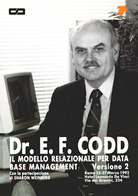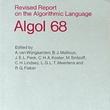
ADDING THE WEB TO DATABASE CLASS
Donna M. Schaeffer, PhD
Marymount University, Arlington, VA 22207
703.284.5718
Patrick C. Olson, PhD
National University, San Jose, CA 95128
408.236.1152
olsonp@alumni.usc.edu
| E.F. Codd is credited with giving the relational database concept its start. This occurred in 1971. After four decades relational databases are still an important technology. Unfortunately they are often a backroom technology while the technology more commonly confronted is the Web. This implies a problem of keeping database classes fresh and relevant, essentially relevant |
 (Source: technologytransfer.it) |
|
Relevance is credibility2 – to students, the profession, and the society outside higher education (alumni, parents, employers). Relevance also implies utility, which is also judged by students, alumni, parents and employers. |
 (Source: zacksays.com) |
| Teaching a database course that is relevant can be difficult, especially if there is low or no budget. A successful means of keeping the course relevant has been to teach web-based database development. The outcome is a course that brings the subject alive and can immediately provide benefits such as job opportunities or promotions to students. |
 (Source: dekalb.k12.ga.us) |
| It seems likely that the more removed the subject is from common experience, the more difficult is the task of obtaining an audience. In the following sections, a means of defining what is relevant for a course is discussed followed by experiences with teaching database including the web. The final section is about outcomes. |
 (Source: philip.greenspun.com) |
|
Relevance is multifaceted. In fact, a given portion of a course or enhancement to a course may not accomplish relevance for all audiences. For example, normalization is very relevant to a database class but it might not always be credible or useful to all audiences. Credibility may not occur with some audiences because “we de-normalize anyway.” In other groups normalization may not be contemporary (and therefore relevant) because “that comes from a 1971 article” (Codd, 1971). For students, what is relevant is often “what will be on test.” |
 (Source: hdcommittee.wordpress.com) |
| Achieving relevance for a course or program is challenging because of the audiences. Students, parents, alumni, employers, and faculty in other institutions are each likely to be important. Students need to believe in the course to succeed in the course. They also need to believe in the course to carry the benefits forward to their future endeavors. Parents are similar. Employers are looking for knowledge that is immediately applicable. External faculties, who might be reviewers of the course or curriculum, are interested in finding that the course or curriculum has integrity. |
(Source: abertay.ac.uk) |
| Relevance is tied to what is used in courses. For example, at many institutions relevance is tied to the selection of a programming language in programming courses. There are languages that might increase both the effectiveness and efficiency of teaching and learning. However, the language chosen is often a language used by a large employer in the area. Notice that in this case perceived use is more important than the audience. Another example is the LOGO programming language; it has integrity, e.g. the major concepts are well defined and easy and fun to learn, but it lacks relevance. |
 (Source: home.messiah.edu) |
|
Sometimes
relevance is being contemporary. The programming course once again
provides examples. Teaching JAVA is generally considered
contemporary. Teaching ALGOL would not be considered contemporary.
Prudence dictates that relevance should be considered in depth to achieve integrity in a course or curriculum. However, if the course or curriculum definitely impacts employment or employability it is thought to have accomplished these things. |
 (Source: freebase.com) |
| The authors of the paper designed a database course that included a project in which students designed and implemented a database on a back-end computer, designed a web page for data entry and retrieval on personal computers, and wrote middleware to connect the two. |
 (Source: www-03.ibm.com) |
| This course was taught at several institutions. The first and most expensive version of this effort took place at a state supported research university. The course was an undergraduate and graduate database course that was part of the undergraduate and graduate information systems programs. It was also available to graduate computer science students. Oracle was the back end database, and focus of the class. The Web Server was Netscape’s Enterprise server. The middleware was Live Wire. This was done for one semester and was a success. That is, it helped the students with employment opportunities upon graduation. |
 (Source: amazon.co.uk) |
| The second and ongoing version of this took place at a regional institution. This was in the database course for the Master of Science in Information Systems. This is also less expensive. PostgreSQL (open source) is the back end database. The Web Server is Apache (open source). The middleware is PHP (open source). This was done over a three year period. This was also a success as measured by student employment outcomes. |
 (Source: faqs.org) |
|
The exercises
proceed in four steps over the time of the course. In the first
step, students prepared the user interfaces on the Web Server. This
is done in HTML. It provided a means of obtaining familiarity with
the systems. It also provides familiarity with the user view of the
system. In the next step, students developed and established
normalized databases. This is the focus of a database course. This
part comprised the middle half of the course. In the final step,
students worked on the middleware, which involved revising the
original HTML. The new code included the appropriate PHP statements
and making the PHP pages necessary to connect to the database. In
the final step, students demonstrated their working databases. |
 (Source: lifehack.org) |
|
In each of the
courses using this approach, the end result was a significant change
in employment opportunities for some students. Five alumni who used
Oracle, Live Wire and Netscape Enterprise Server went to work for
Oracle after graduation. For the alumni of the second approach,
there were immediate and longer term impacts. Twelve alumni reported
receiving promotions or obtained better jobs because of their
experience with middleware and back-end databases. |
 (Source: 123rf.com) |
|
Additionally, one
student who had little practical experience in information
technology applied for a sales job with a high-technology company.
During the interview, she showed the recruiting manager her online
three-tier database. After they discussed it, she was offered a
better position in the IT department of that company at twice the
starting salary of salespeople. |
 (Source: shutterstock.com) |
|
The longer-term
career impacts include that four alumni in this group became CIOs or
Directors of Information Technology at small organizations within a
few weeks of graduation. Two of those have subsequently gone on to
the CIO positions at larger organizations. Five others have
successfully established small IT support businesses which continue
to grow. |
 (Source: www2.egov.gov.sg) |
|
Conclusion While there are other advantages to using Web to teach database, the focus of this examination of the topic is establishing that using this approach can achieve a relevant course. Achieving this is established using the change in student employment to establish that the approach is contemporary, has some credibility, and is therefore relevant. Two different versions of the Web approach were mentioned, and both of these improved some students’ employment. |
 (Source: maldenyachtclub.org) |